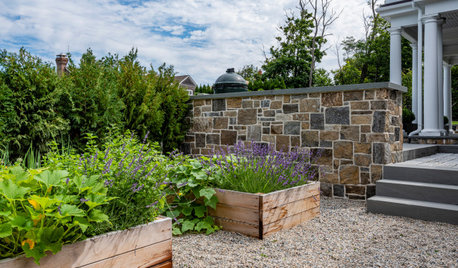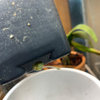Anwers on how to root roses from Kim Rupert
The rosarian and breeder Kim Rupert took the time to answer my questions on rooting my 1st rose, so I post them here. He bred many great roses such as thornless Lynnie, thornless Annie Laurie McDowell, Too Cute, and Purple Buttons ... and many others.
Here are my questions to Kim Rupert: "I was looking at what you posted about rooting roses. I wonder about putting a soda bottle over the rooting: would it suffocate the plant? Plants need air, right?
I'm rooting Golden Celebration's branches IN THE GROUND due to our winter. It's a shady spot, gets 4 hours of cool weak morning sun. We had non-stop rain for the past 7 days, and I finally see the sun today.
For the soil in that spot, I'll dig a hole and fill it with half peat moss, and half perlite. Or should it be half potting soil, and half perlite?
You mentioned that alkaline tap water isn't best for rooting. I'll collect rain water, and chop up corkscrew willow branches (I have 2 giant trees in my yard). This would give it extra rooting-hormone.
I soaked some Thai basil branches using rain water and rooting hormone. All got rotten, except for 1 branch that was crushed accidentally PRIOR to soaking in water. Should I smash the end of the rose branch on purpose to root better? Hartwood Roses' instruction said just to slice the outer greenish layer gently, and not to get too deep.
I posted another pic. of Lynnie in HMF. That one should replace knock-outs in the future - it blooms non-stop here. I love it! Thanks, Kim, for your help in my 1st rooting."
Kim Rupert replied:
Whether to put anything over the cutting or not depends entirely upon your humidity levels. If it's arid and things dry out quickly, you might benefit from covering them. If it's continually moist, humid, even damp, they may rot faster.
When I propagated in the Santa Clarita Valley, where Aimeekitty lives, I had to enclose everything in plastic or they would dry out in a day or two. Doing exactly the same things here in Encino, one mountain away from the ocean, every last cutting molded. The only thing I could root uncovered in Santa Clarita was Althea, hardy hibiscus. I could cut them, stuff them in a bucket of water in the blazing, hot sun and as long as the bucket had water in it, they rooted and grew like Jack's Beanstalk!
I found here I could root hibiscus sinensis by putting cuttings in pots over winter, uncovered, on the north side of the house where they would received strong, indirect light. They rooted right down the line. I'm currently trying two roses the same way, in the same place, but at a hotter, brighter time of the year. So far, things look OK, but I'm keeping my fingers crossed!
If your soil remains wet, I don't think I'd use peat moss in the hole as it may remain too soggy and too acidic. A peat or coir based potting soil would probably work quite well as it would retain moisture while allowing good air circulation through it so things don't sour in case of there being too much water/too slow drainage. Collecting rain water may not be necessary, but I don't think it could hurt a thing. The willow water will probably help but I don't think you'll need to use it past the first one or two waterings. I've not tried it, but know the Salicylic Acid in it does aid rooting.
As for crushing the ends, that has been promoted for both making cut flowers last longer and rooting cuttings. For longer lasting flowers it's because it opens the capillaries which have either clogged or whose siphons have stopped after being cut. Constance Spry instructed to crush woody stems, such as lilac, before using them as cut flowers to keep them fresher, longer. I'd think it would work the same with woodier rose material but for soft material, it might bruise it too much, which might rot faster due to the crushed, bruised tissues.
What Connie is suggesting is to expose more of the cambium layer. You probably know this, but in case you don't, please don't read it as condescending as it honestly isn't meant to be. I apologize in advance if it seems to be. You have the three layers of material in most cuttings. The "skin" is the bark. Just under it is the brighter green, "juicier" layer called the cambium. This is easily exposed by breaking off a prickle from a flowering stem. Two ways traditionally used to determine if a stem is ready for propagation are either a flower at its end has freshly shattered, or the prickles along its length are easily, cleanly broken off with your fingers, revealing the fresh, juicy cambium under them.
The center of the stems is the pith, or bone. The majority of the stem is pith. It gives strength and support to the plant so it stands on its own. The pith is also used to store nutrients in. The cambium and bark are thin layers enclosing the pitch, upholstering it.
The cambium is what differentiates, calluses and either glues the bud inserted under the bark so it grows, or forms roots to make the cutting a new plant. Two reasons why it's suggested to take a "heel cutting" are that thicker growth will have a greater exposed area of cambium and that heel has more growth buds in it than a straight length of cane. Both increase your chances of quick rooting and plant development.
If you have some Huey suckers you don't mind massacring, take a small, sharp knife or a single edged razor blade and begin dissecting it. Practice scraping through the bark to reveal more of the cambium until you can comfortably peel the bark off leaving a good amount of the cambium. The bark won't root, neither will the pith.
It's only the cambium that forms roots. By exposing more of it than is open on the cut end, you can increase the speed and amount of callus and roots. Taking too much off can work in reverse because it also allows bacteria and fungi access to the cambium where they can cause issues.
It also removes the protection against drying out the bark provides. So, you might be able to accomplish this by breaking off the prickles which would be under ground on the cuttings. You can also do it by gently scraping through the bark, but not through the cambium.
Practicing on either prunings or suckers you're going to throw away, anyway, permits you to become more comfortable doing it and learning what it looks like so you're more proficient at doing it.
Your question about plants needing air is a yes and no answer. Plants grown in a terrarium get no outside air and grow fine...provided they're not too wet or too dry depending on what types of plants they are. During the light hours, they absorb carbon dioxide and release oxygen and water vapor so they water themselves, recycling that moisture.
During dark hours, they absorb oxygen and release carbon dioxide and water vapor. That's why you usually don't want live plant material near your bed so you get all the oxygen while you sleep. As long as it's not too wet for the cuttings, they will keep themselves watered and not dry out. If it's too wet under there, they will mold. "Too wet" depends upon how arid your air is. If you have high relative humidity, or a lot of rain, covering them may rot them as it did here. We had a lot of rain when I tried covering them and earlier in the year, we have higher relative humidity which is why the uncovered hibiscus rooted so well.
They will continually recycle the oxygen and carbon dioxide from day to night, so they shouldn't require supplemental "air". They often don't work uncovered indoors because most often, it's too hot and dry indoors so they either dry out or are attacked by spider mites. Mites are the worst issue when growing minis under lights because of the aridity of the air. Washing them off with a water wand is often the most effective treatment for spider mites. It rehydrates the plants, drowns many of the mites and changes the environment to one they don't like, so the ones left, move on or die.
Thanks for posting your photos of Lynnie. I appreciate it! I only get to see it in my garden and in photos of how it does elsewhere, but your reports corroborate what Ashdown said about it all those years. Paul had Lynnie and Little Butterfly in four inch pots on exposed tables where they endured repeated nights of nine degree ice storms with no damage.
He loved Lynnie because she rooted so easily and flowered at such a small size. I was really blessed when that one germinated! She really was what I looked for from that cross, actually, even better! Long Ago Roses is offering Lynnie now and has asked for full bush shots of her. I have to see what I can come up with as mine are short due to cuttings being taken and having been held in depleted soil in nursery cans too long.
I hope this helps you to determine what might work best for your cuttings. I have found that longer cane lengths in the soil help, too as that keeps the cuttings fed, watered and permits them the resources to root instead of failing. If you cover them, I'd use something opaque, like a plastic milk jug instead of a colored glass. Plants in general grow best in full spectrum light. Colored materials filter out various light waves which prevents foods from oxidizing so they're good for that, but plants want the full range of light waves. Colored materials would block some of those.
Please let me know how it works! Good luck! Kim











grandmothers_rose z6b
strawchicago z5Original Author
Related Discussions
Kim Rupert on making roses hardy and how to make fruits sweeter
Q
Kim Rupert on preventing molds on rootings and seedlings
Q
Ping: Question for Kim Rupert and/or other hybridizers.....
Q
Warriner, Barden, Rupert, Moore - US and West Coast rose breeders
Q
henry_kuska
grandmothers_rose z6b